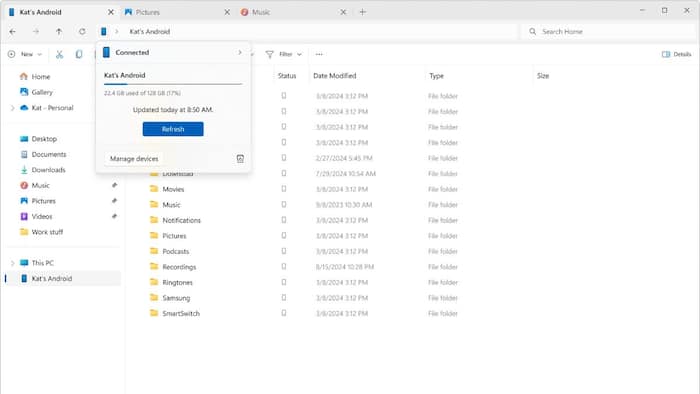
Written By Shubham Verma
Published By: Shubham Verma | Published: Jul 29, 2024, 12:28 PM (IST)

Microsoft is expanding support for Android smartphones on Windows 11 with a new feature allowing users to browse files stored on their phones wirelessly in their PC’s File Explorer. It is currently available for Windows Insider users (read testers), meaning users on stable builds may have to wait for the final version to become available. The Phone Link app on Windows 11 facilitates the new functionality that would make accessing and using files from your smartphone on a PC easier and more convenient. Also Read: After Windows 10 End, Windows 11 Gets New AI Features: ‘Hey Copilot’ Voice And Vision
In its blog post, Microsoft said the new Windows 11 File Explorer feature for paired Android phones will work similarly to when you connect your phone through a cable to access its storage files. Currently, when you use Phone Link to link your Android phone to your PC, you can access functions such as calls, messages, and apps on select models. However, using Phone Link, you cannot access stored files other than gallery photos. The upcoming feature will also make it easier to drag and drop files from your phone to your PC seamlessly. Also Read: Microsoft outage: How to reinstall Windows 11 on your PC
Microsoft has laid out certain conditions to meet for the functionality to work. They include having a smartphone with at least Android 11.0, the latest beta version of the Link to Windows app (version 1.24071 or higher) on their phone, a Windows Insider account with a Windows 11 PC, and access to one of the four Windows 11 Insider channels. Also Read: How to record what's on your Windows 11, Windows 10 PC screen
The upcoming feature is an addition to the recently introduced Phone Link functions allowing you to ask Copilot to send an SMS or summarise text messages stored in the phone’s inbox. It is also a Windows Insider feature, meaning only testers can access it. Microsoft has not said when it will roll out these features, but they are imminent for Windows 11 PCs as the company doubles down on its efforts to counter Apple’s macOS.